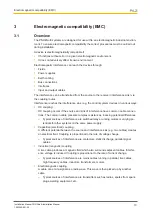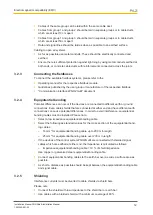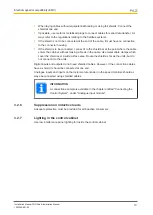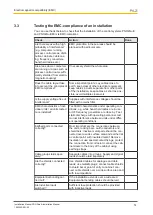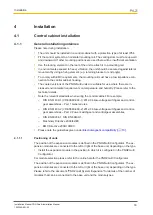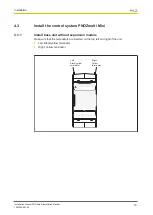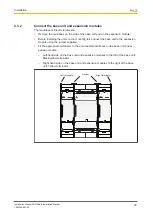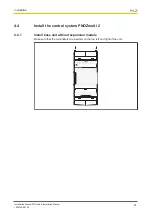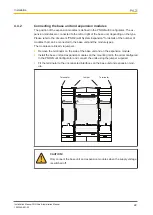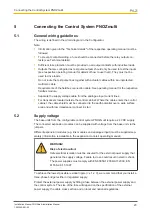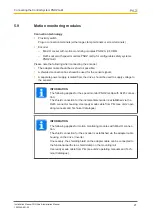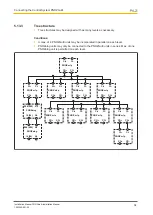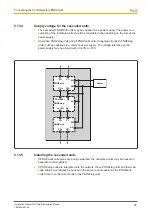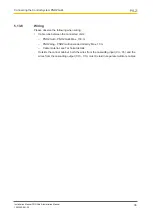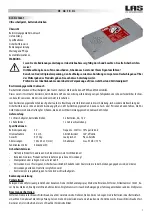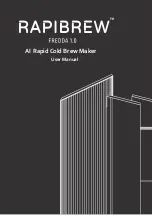
Connecting the Control System PNOZmulti
Installation Manual PNOZmulti Installation Manual
1002265-EN-02
23
5
Connecting the Control System PNOZmulti
5.1
General wiring guidelines
The wiring is defined in the circuit diagram in the Configurator.
Note:
}
Information given in the "Technical details" of the respective operating manual must be
followed.
}
To prevent contact welding, a fuse should be connected before the relay output con-
tacts (see Technical details).
}
Sufficient fuse protection must be provided on all output contacts with inductive loads.
}
Outputs that are configured as test pulse outputs should only be used to test the inputs
(see respective operating manual for details of how to use them). They must not be
used to drive loads.
}
Do not route the test pulse lines together with actuator cables within an unprotected
multicore cable.
}
Requirements of the fieldbus connection cable: See operating manual for the respective
fieldbus module.
}
Separate the supply voltage cable from the analogue input current lines.
}
For transducers located outside the control cabinet: Where the cable enters the control
cabinet, the cable shield must be connected to the earth potential over a wide surface
area and with low impedance (connect in star).
5.2
Supply voltage
The base units from the configurable control system PNOZmulti require a 24 VDC supply.
The connected expansion modules can be supplied with voltage from the base unit via the
jumpers.
Different expansion modules (e.g. link modules and analogue input) must be supplied sep-
arately (information is available in the expansion module's operating manual).
WARNING!
Risk of electrocution!
Safe electrical isolation must be ensured for the external power supply that
generates the supply voltage. Failure to do so could result in electric shock.
The power supplies must comply with EN 60950-1:2006/A11:2009, EN
61558-2-6:11/1997.
To achieve the lowest possible residual ripple (< ± 1.2 V), we recommend that you install a
three-phase bridge rectifier or regulated supply.
Protect the external power supply by fitting a fuse between the external power supply and
the control system. The size of the fuse will depend on the specification of the external
power supply, the cable cross section and on local and national regulations.


